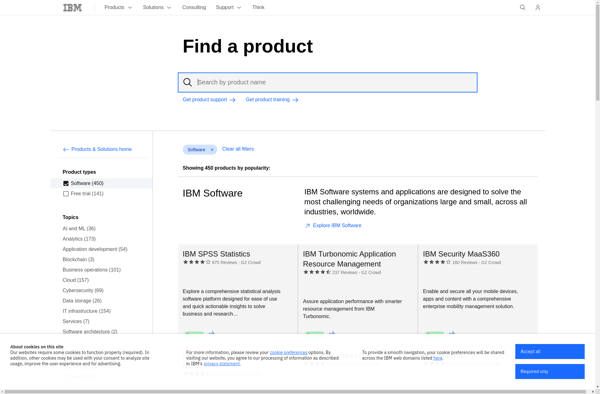IBM Operational Decision Manager

IBM Operational Decision Manager: Business Rules and Decisions Platform
A decision management platform helping organizations manage complex business rules and decisions, with capabilities for authoring, deploying, executing, monitoring and governance of decision logic across applications and processes.
What is IBM Operational Decision Manager?
IBM Operational Decision Manager (ODM) is a comprehensive decision management platform that enables organizations to capture, automate, govern, and analyze business decisions and their enforcement across applications and processes. It provides capabilities for:
- Authoring business rules and predictive analytic models using an easy-to-use interface
- Testing and validating decision logic across multiple test scenarios
- Deploying and integrating decision services into line-of-business applications and processes
- Executing and managing decisions with high performance and scalability
- Monitoring and auditing decision services for regulatory compliance and operational oversight
- Governance of decision logic across development, test and production environments
Some key capabilities and benefits of IBM ODM include:
- Centralized management of all business rules and analytic models
- Traceability of decision logic changes back to business requirements
- Simulation of decision outcomes across multiple scenarios
- Real-time and high performance decision execution
- Monitoring and explaining decisions for transparency
- Seamless integration with applications, databases and AI models
- On-premises, cloud and hybrid deployment options
IBM ODM enables organizations to respond faster to changing regulations, policies and market conditions. It helps improve decision consistency, quality and auditability across the enterprise.
IBM Operational Decision Manager Features
Features
- Business rule management
- Decision governance
- Decision execution
- Decision monitoring
- Integration with BI and analytics tools
- Deployment flexibility (on-prem, cloud, hybrid)
Pricing
- Subscription-Based
- Pay-As-You-Go
Pros
Cons
Reviews & Ratings
Login to ReviewNo reviews yet
Be the first to share your experience with IBM Operational Decision Manager!
Login to ReviewThe Best IBM Operational Decision Manager Alternatives
Top Ai Tools & Services and Decision Management and other similar apps like IBM Operational Decision Manager
Here are some alternatives to IBM Operational Decision Manager:
Suggest an alternative ❐Hyperon

Drools

Simple Rule Engine

DecisionRules.io

MiniZinc

OptaPlanner

NxBRE
